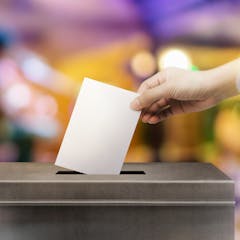
Articles on Disinformation
Displaying 1 - 20 of 231 articles

Understanding how to spot a bot is essential, especially for anyone voting in an election.

As technology has advanced, AI-generated deepfakes have become more convincing.

Using disinformation to sway elections is nothing new. Powerful new AI tools, however, threaten to give the deceptions unprecedented reach.

How do we distinguish between valuable information from legitimate health experts, and pseudoscientific nonsense from unscrupulous wellness influencers?

Russian disinformation expert Ilya Yablokov tells The Conversation Weekly podcast about the president’s shifting relationship with conspiracy theories.

Third-party fact checking appears to be in decline around the world - and Australia is not immune.

The effects of AI’s growth on global security could be difficult to predict.

Low tech or hi-tech, the next year will determine how much action nations take on election interference.

It’s increasingly hard to tell which content online is fake. As malicious actors use generative AI to fuel disinformation, governments must regulate now before it’s too late.

People who dive into misinformation are driven to satisfy an emotional need, according to our new research.

Scientists estimate that for every 100,000 people targeted with specific political ads, several thousand can be persuaded.

When we see false information circulating, we might move to debunk it. But prebunking lies and explaining manipulation techniques can work better.

Will the Wagner Group under new leadership uphold the ruthless modus operandi that propelled it to the spotlight in Africa?

Disinformation experts, Lilik Mardjianto and Nuurrianti Jalli, tell The Conversation Weekly podcast about the deepfakes circulating ahead of the Indonesian election.

With an unprecedented number of votes happening around the world, the information environment will be chaotic, to say the least.

Deepfake technology is widely available, and a pivotal election year lies ahead. The FCC banned AI robocalls, but AI-enhanced disinformation campaigns remain a threat.

Viral bots are ‘tricking’ social media algorithms to get more coverage for disinformation.

Youth in a study went from being passive deepfake bystanders to developing a sense of responsibility and readiness to help prevent deepfakes’ spread.

Most studies suggests that fake news is more likely to enhance existing beliefs and views rather than radically change voting intentions of those who are undecided.

Deepfake technology is widely available, and a pivotal election year lies ahead. The fake Biden robocall is likely to be just the latest of a series of AI-enhanced disinformation campaigns.
